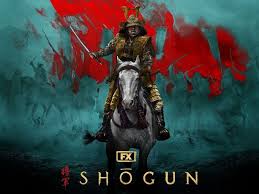ONE OFFER COMPLETE
"Shōgun: Season 1, Episode 10 – A Dream of a Dream" is a gripping episode in the miniseries adaptation of James Clavell's epic novel. This episode weaves together the complex strands of political intrigue, cultural conflict, and personal relationships, culminating in a dramatic and emotionally charged conclusion. Here is a detailed synopsis and analysis of the episode:
Synopsis
Opening Scene
The episode begins with a serene but poignant scene of the protagonist, John Blackthorne, reflecting on his journey since he first arrived in Japan. His thoughts are a mixture of nostalgia for his homeland and a deepening appreciation for the culture that has enveloped him. This introspection sets the tone for the episode, hinting at the internal conflict Blackthorne will face.
Political Tensions
As the episode progresses, we witness the escalating political tensions between the ruling samurai factions. Toranaga, a powerful daimyo, is maneuvering to consolidate his power against his rival Ishido. The political landscape is fraught with danger, and every move Toranaga makes is calculated with both wisdom and ruthlessness. Blackthorne, having become an advisor and confidant to Toranaga, is drawn deeper into the complexities of Japanese politics.
Cultural Clashes
The episode skillfully portrays the cultural clashes between the European and Japanese characters. Blackthorne’s Western ways often clash with the strict codes of the samurai. However, he has grown to respect and adapt to these codes, showing his transformation from a foreign outsider to someone who straddles both worlds. The episode highlights this transformation through various interactions, particularly with Mariko, a noblewoman who has been his guide and confidant.
Personal Struggles
Mariko, a pivotal character, faces her own struggles. Torn between her loyalty to Toranaga and her forbidden love for Blackthorne, she embodies the internal conflict of many characters in the series. Her relationship with Blackthorne deepens, and their bond becomes a central focus of the episode. Their love is portrayed with tenderness and tragedy, as they both know the impossibility of their union in a society bound by rigid social structures.
Climax: The Battle
The climax of the episode is a dramatic battle scene where Toranaga’s forces engage Ishido’s. The battle is depicted with intense, visceral action, showcasing the brutal reality of samurai warfare. Blackthorne, now more samurai than sailor, fights alongside Toranaga’s men, his transformation complete. The cinematography captures the chaos and heroism of the battlefield, making it a standout moment in the series.
Aftermath and Resolution
In the aftermath of the battle, Toranaga emerges victorious, solidifying his power. However, victory comes at a cost. The episode’s title, "A Dream of a Dream," is realized in the poignant final scenes. Mariko sacrifices herself to save Blackthorne, choosing duty over love. Her death is a heartrending moment, marking a turning point for Blackthorne. He is left to grapple with his grief and the realization of his dream within a dream—a life in Japan that can never fully be his.
Analysis
Themes episode explores several themes with depth and nuance:
- Cultural Exchange and Transformation: Blackthorne’s journey from an English navigator to a samurai symbolizes the transformative power of cultural exchange. His character embodies the synthesis of Eastern and Western values.
- Duty vs. Desire: Mariko’s sacrifice underscores the conflict between personal desire and societal duty, a recurring theme in the series. Her character’s tragic end highlights the rigid structures that govern samurai society.
- Power and Loyalty: Toranaga’s ruthless quest for power and the loyalty he commands reflect the political machinations of feudal Japan. The intricate dynamics of power and loyalty are pivotal to the narrative.
Character Development
- John Blackthorne: His evolution is central to the episode. From a foreigner bewildered by Japanese customs to a man who deeply respects and embodies them, Blackthorne’s arc is a testament to his adaptability and resilience.
- Mariko: Her character is the emotional core of the episode. Her internal conflict and ultimate sacrifice are portrayed with sensitivity, making her one of the most compelling characters.
- Toranaga: As a master strategist, Toranaga’s complexity is further revealed. His ability to balance compassion and ruthlessness makes him a formidable and intriguing figure.
Cinematic Techniques
The episode employs various cinematic techniques to enhance storytelling:
- Visual Symbolism: The use of traditional Japanese imagery juxtaposed with Western elements underscores the cultural clash and eventual synthesis.
- Battle Choreography: The battle scenes are meticulously choreographed, highlighting the brutality and honor of samurai warfare.
- Music and Sound: The score blends traditional Japanese music with Western motifs, reflecting Blackthorne’s internal journey and the merging of cultures.
Conclusion
"A Dream of a Dream" is a masterful episode that encapsulates the essence of "Shōgun." It deftly weaves together political intrigue, cultural conflict, and personal tragedy, creating a rich tapestry that is both engaging and thought-provoking. The characters’ journeys, particularly those of Blackthorne and Mariko, are rendered with depth and sensitivity, making this episode a poignant and powerful conclusion to their arcs. The episode not only serves as a climax to the series but also leaves a lasting impression on the viewer, highlighting the timeless themes of love, duty, and transformation.



.jpg)

No comments:
Post a Comment